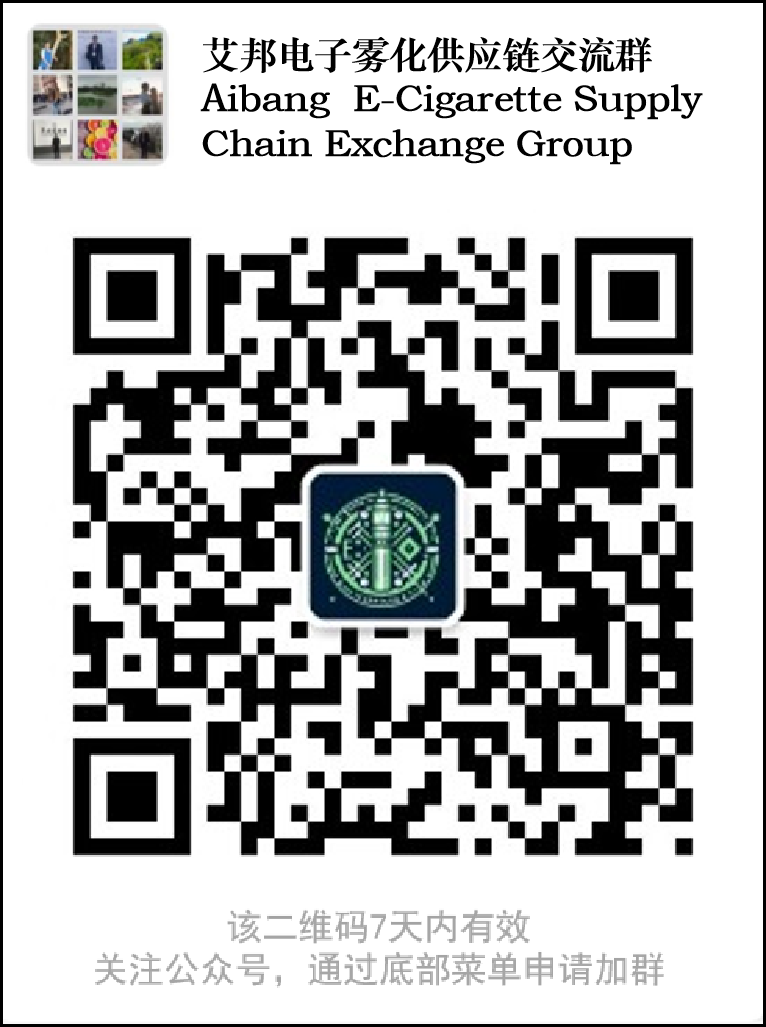电子烟:出海之路漫漫,坚守两大防线
本文概述了中国电子烟行业在海外市场的发展现状和面临的挑战。2023年1-10月,中国电子烟出口额达90.49亿美元,显示出行业的增长和出海趋势。企业通过拓展海外市场,接触更广泛的消费者,并应对不同区域的政策约束和消费需求。技术创新和质量控制是中国电子烟行业的优势,但在国际市场上,企业需平衡创新与合规,确保产品符合各国法规。合规运营和监控国际市场法规变化是企业维持竞争力的关键。文章强调,安全性是出海的第一步,品牌需提供符合中式特色的优质产品,以促进国际市场的持续扩张。
根据我国海关总署统计的2023年10月份电子烟出口贸易数据显示,2023年1月-10月,我国电子烟出口总额约为90.49亿美元(约合647亿元人民币)。
不难看出,近年来我国电子烟出口业务正在逐步走向正轨并发展壮大。尤其是面对一系列新规的发布,国内市场充满了不确定性,为了保证品牌的规范化运行,目前许多电子烟企业和厂商已经开始大力拓展海外市场,"出海"成了整个电子烟行业的共识,且需求愈发强烈。
对于企业而言 ,进入海外市场,意味着可以接触到更大范围的海外客户,发现新的发展机会,帮助企业开辟其原本完全无法触及的机会。此外,借助全球扩张,企业可以接触到各个地区的消费者,口味更多样、技术更成熟。
然而企业出海同时也意味着要面对情况更加复杂的全球市场,想要在全球市场进行业务拓展面临着多方面的风险,主要集中在当地政策的约束与适应,当地消费口味的满足与创新两大层面。

修炼内功,以技术成就品质基础
一直以来,我国电子烟的技术创新和质量把控在全球占有明显优势,电子烟企业利用深圳强大的供应链体系、制造能力和创新活力,可以说成为了全球电子烟产业的制造中心,上游供应链的良好基础与成熟发展,为后续产品创新提供基础。
尽管我国电子烟技术基础夯实、质量可控,但在走向海外的过程中,依然要面对不断演变海外消费市场需求,包括满足消费者追求更多可能性、多样性等需求。
因此,出口电子烟更需以科研创新和高品质产品为双驱动,持续加速全球布局与业务拓展,致力于为国家和电子烟行业的出海贸易做出更大贡献。通过自身技术的赋能,利用自身的团队力量去创新,为开辟国际市场,扩大中国电子烟在国际市场上的地位和影响力。
强化外功,严守各地政策监管
回顾这几年电子烟行业的发展,不难发现,电子烟行业在全球范围内发展迅速,但同时也面临着严峻的监管挑战,从法规的不断演变到消费者对产品安全性的日益关注,电子烟企业如何在这一场澜壮阔的变革中保持竞争力,成为了行业各品牌关注的焦点。
政策的变化对于电子烟品牌的发展,往往起到牵一发而动全身的作用。随着我国电子烟的一系列政策法规落地,包括《电子烟管理办法》、《电子烟》强制性国家标准等,国内全产业链实行持牌许可经营,行业迎来全新合规时代。国外同样如此,各国各地区都结合当地实际情况,不同程度地收紧了监管力度。
电子烟企业不仅要在创新和市场竞争中保持优势,还必须确保其产品和运营符合越来越复杂的法规要求。因此电子烟无论是出海或内销,合规都是主旋律,尤其是对于全球市场的电子烟品牌来说,合规更是一个不可回避的重要议题。
笔者以为,面对日益严格的国际市场监管,各品牌需要在创新和合规之间找到平衡点,以确保可持续发展。这不仅要求企业在产品安全性和技术创新上不断努力,还需要在法规遵守和市场策略上展现出足够的灵活性和敏锐性。
但同时,除了产品合规以外我们也需要看到的是,相较适应以海外市场为主的品牌,还包括营销策略和销售渠道的管理,各品牌需要持续监控国际市场的法规变化,及时调整策略,以保持其产品的合规性和市场竞争力。
电子烟出海之路漫漫,产品安全性是第一步,各品牌必须确保其产品能够适应不同国家的法规要求,在此基础上,依托我国强劲的产品研发和创新实力,为海外消费市场提供更具中式特色的优良产品,从而不断扩展国际市场。
来源:掌上决策参考 作者:霍火火
E-cigarettes: A Long Journey Overseas, Upholding Two Major Defensive Lines
According to the trade data of e-cigarette exports in October 2023, as reported by China's General Administration of Customs, from January to October 2023, China's total e-cigarette export value was approximately $9.049 billion (about 64.7 billion RMB).
It is evident that in recent years, China's e-cigarette export business is gradually becoming regularized and growing stronger. Especially in the face of a series of new regulations, the domestic market is filled with uncertainties. To ensure the standardized operation of brands, many e-cigarette enterprises and manufacturers have already begun to vigorously expand into overseas markets. "Going global" has become a consensus in the entire e-cigarette industry, with an increasingly strong demand.
For enterprises, entering the overseas market means accessing a broader range of foreign customers, discovering new opportunities for development, and helping the company to tap into opportunities that were previously out of reach. In addition, with global expansion, enterprises can cater to consumers in various regions, offering more diverse tastes and more mature technology.
However, going global also means facing a more complex global market situation. To expand business globally involves multiple risks, mainly concentrated on local policy compliance and adaptation, as well as satisfying and innovating according to local consumer preferences.
Cultivating Internal Strength, Achieving Quality with Technology
China's e-cigarette technology innovation and quality control have always had a clear advantage globally. E-cigarette enterprises, utilizing Shenzhen's strong supply chain system, manufacturing capabilities, and innovative vitality, have become the manufacturing center of the global e-cigarette industry. The solid foundation and mature development of the upstream supply chain provide the basis for subsequent product innovation.
Although China's e-cigarette technological foundation is solid and quality is controllable, in the process of going overseas, it still faces the challenge of evolving foreign consumer market demands, including meeting consumers' pursuit of more possibilities and diversity.
Therefore, the export of e-cigarettes needs to be driven by both scientific research innovation and high-quality products, continuing to accelerate global layout and business expansion, and striving to make greater contributions to the country and the e-cigarette industry's overseas trade. Through the empowerment of their technology and the innovation of their teams, enterprises aim to open up international markets and expand the position and influence of Chinese e-cigarettes in the global market.
Strengthening External Skills, Strictly Adhering to Local Policy Regulations
Looking back at the development of the e-cigarette industry over the past few years, it's not hard to see that the industry has developed rapidly worldwide but also faces severe regulatory challenges. From the continuous evolution of regulations to consumers' increasing concern for product safety, how e-cigarette enterprises maintain competitiveness in this grand transformation has become the focus of attention for all brands in the industry.
Changes in policy often have a domino effect on the development of e-cigarette brands. With the implementation of a series of policies and regulations in China, including the "E-cigarette Management Measures" and the mandatory national standard for e-cigarettes, the domestic industry has entered a new era of compliance. The same is true abroad, where countries and regions have tightened regulations to varying degrees based on local conditions.
E-cigarette enterprises must maintain their advantages in innovation and market competition while also ensuring that their products and operations comply with increasingly complex regulatory requirements. Therefore, whether e-cigarettes are for export or domestic sales, compliance is the main theme, especially for global e-cigarette brands, where compliance is an unavoidable crucial issue.
The author believes that in the face of increasingly strict international market regulations, brands need to find a balance between innovation and compliance to ensure sustainable development. This not only requires enterprises to continuously strive for product safety and technological innovation but also to demonstrate enough flexibility and acuity in regulatory compliance and market strategy.
At the same time, besides product compliance, we also need to recognize that, compared to brands mainly adapted to the overseas market, this also includes the management of marketing strategies and sales channels. Brands need to continuously monitor the changes in international market regulations and adjust their strategies in time to maintain the compliance and competitiveness of their products.
The journey of e-cigarettes going overseas is long, and product safety is the first step. Brands must ensure that their products can meet the regulatory requirements of different countries. On this basis, relying on China's strong product research and development and innovation strength, they can provide overseas consumer markets with high-quality products with Chinese characteristics, thus continuously expanding the international market.
电子雾化与HNB产品都是新型电子产品,结构虽小,却融合应用多种材料、表面处理、芯片电子等技术工艺,而且雾化技术一直在不断更迭,供应链在逐步完善,为了促进供应链企业间有一个良好的对接交流,艾邦搭建产业微信群交流平台,欢迎加入;Vape e-cigarettes (VAPE) and Heat-Not-Burn e-cigarettes (HNB) are both emerging electronic products. Despite their compact size, they integrate various materials, surface treatment technologies, chip electronics, and other advanced technical processes. Moreover, atomization technology is constantly evolving and the supply chain is being progressively perfected. To facilitate good communication and networking among supply chain enterprises, Aibang has established an industry WeChat group communication platform and warmly welcomes interested enterprises to join.

